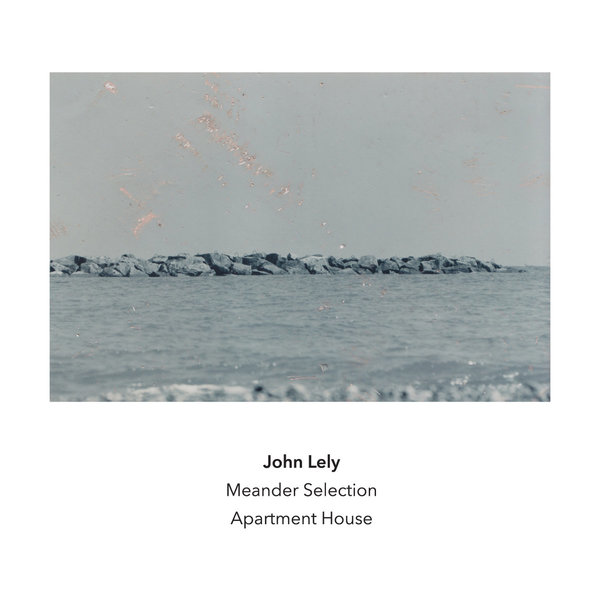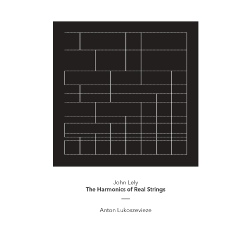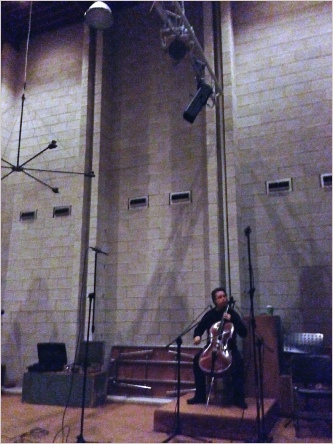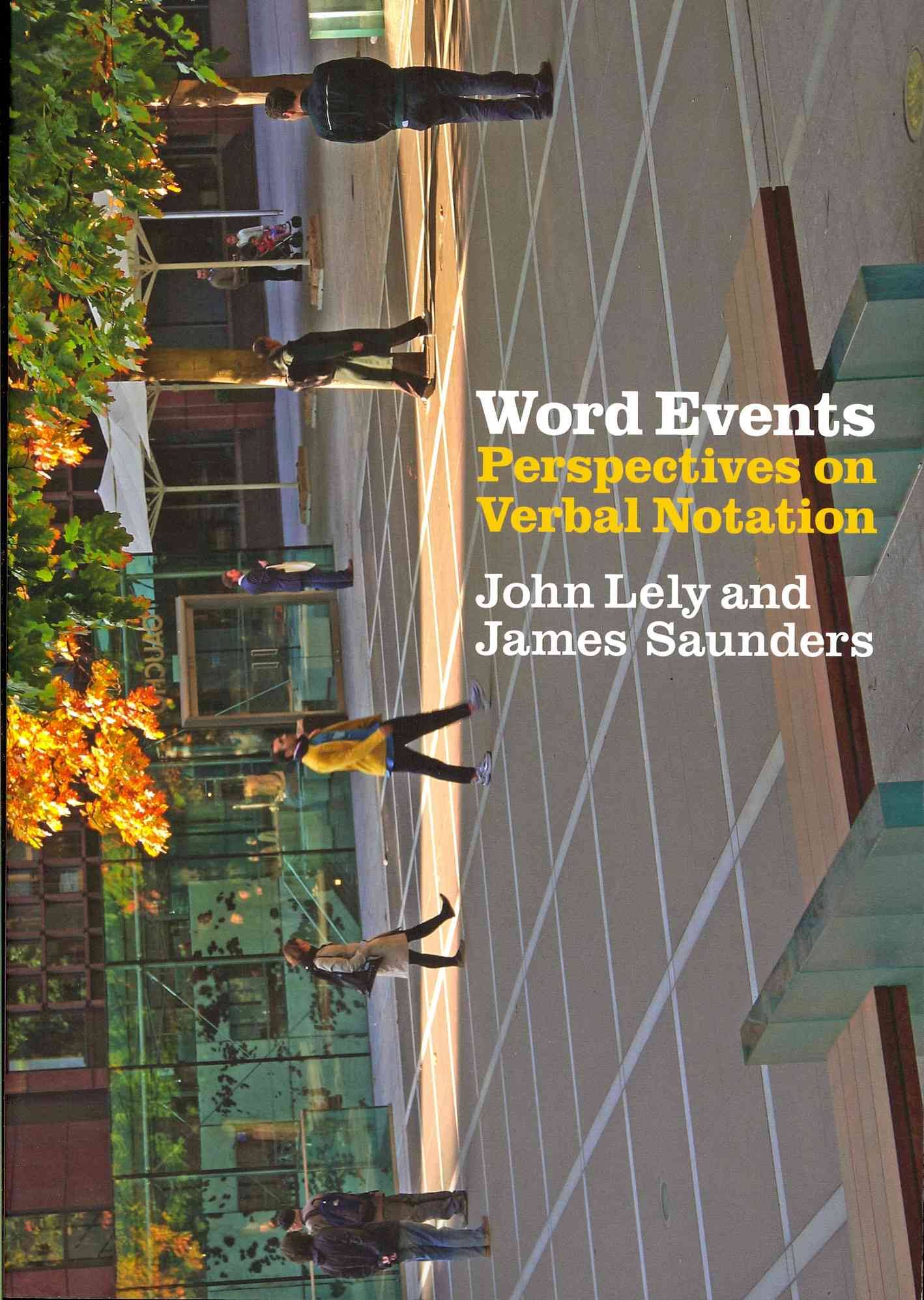Press
John Lely's music [...] has a clear apparence, a simplicity of intent, a wonder at how the elemental can sometimes produce a complex reaction. His music has an affinity with systems, or constraints. There's a series of pieces called symphonies. Each one presents a singular elemental system for a group of any number of people, with any sound producing means. Like the sixth symphony, called Symphony in e (2009) in which the instruction is to make a sound either the same as the previous one, or different, or a choice of either same or different. Again, this simple procedure leads to rich and complex results. Or the Symphony No.3 (2008) for a group of musicians using pitched instruments, which uses the 'Parsons Code for Melodic Contour' found in an article in Wikipedia, as a similar process of moving either up or down in pitch, or staying the same. Extraordinary, unforeseen rich harmonies arise, in a slow, deadpan, straightforward, plodding regularity. In performing the symphonies, each player has a high degree of individual responsibility, concerned with their own sound, yet working within a mass of other sound. Since each player chooses their own sound, the results vary between each performance. But it's always a collective of individuals.
Another piece which is often played is The Harmonics of Real Strings (2006), for any string instrument, in which a performer, while continuously bowing one string, lightly stops the string with the other hand which very slowly moves up the string from the scroll towards the bridge, over the duration of fifteen minutes or more. This simple process makes a piece which makes us listen to the ultimate complexity of the resulting sound, as the dancing noisy bow and string sound slowly forms or settles into a natural harmonic, then destabilises and scatters as the finger approaches and moves away from a nodal point. There are clear affinities with the simplicity of presentation in the music of Alvin Lucier, or James Tenney, for example. I also feel John has a strong connection with the previous experimental tradition in Britain. He is close friends with John White and Michael Parsons.
There is no wilful cleverness here. No fancy design, or prettiness of presentation for a listener, no beginning-middle-end, no arguments, conclusions, denouements. Just the facts. You either get it or you don't. Like someone who shows up with an egg, looking in wonder at its simple clear and elegant perfection. We may smile or laugh, or be insulted that this is nothing new, what did we pay for this for, 'I could do that.' But as adults we lose this childhood fascination and simple observation of the world around us. For some this is not enough, but for others it is of paramount importance.
Tim Parkinson, A Clear Apparence, October 2011
Reviews of 'Meander Selection'

John Lely, who's collaborated with Rhodri Davies, John Tilbury and others, teams up with Apartment House on a lengthy selection of contemporary classical experimentation. Lely has worked with Apartment House many times, and here he's assisted by bandleader Anton Lukoszevieze on cello, Mark Knoop on piano, Bridget Carey and Chihiro Ono on violas and Mira Benjamin and Gordon MacKay on violins. Lely himself performs electronics on the short and stark 'Pale Signal', while the rest of the compositions are purely chamber pieces. It's the scope of Lely's selection that stands out most - he's clearly a voracious consumer of music. He devours post-Nyman minimalism on 'Karnaugh Quartet' and glacial piano music on 'for Philip', but it's when he folds in elements of sacred music, ancient folk and harmonically-damaged experimental drone that the set is at its most absorbing. ['Stopping at the Sheer Edge Will Never Abolish Space'] is the finest example, a gloriously triumphant scraped string micro-odyssey that sounds doggedly modern but steeped in the raw elements of European folk traditions. Stunner.
Boomkat, 2022
Reviews of 'The Harmonics of Real Strings'

A well-worn dictum of aesthetics holds that 'perfection is attained not when there is nothing more to add, but when there is nothing more to remove'. While many artists follow this suggestion by chipping away at their unfinished products in search of some truth within them, John Lely's scores rather tend to pare down their instructional and instrumental resources while creating maximally rich and complex results in performance.
[...] Born in 1976, John Lely's main early influences as a musician were British and American experimental composers, and his work has stayed largely in this tradition: though this is (I believe) the first recording of any of his compositions, he has been active as a musician for over 15 years, has co-written with James Saunders a study of verbal scores (Word Events: Perspectives on Verbal Notation) and, since 2005, with Markus Trunk and Tim Parkinson, has co-curated Music We'd Like To Hear, an acclaimed series of experimental music concerts in London. For several years Lely was also an active improviser on the London scene, playing particularly with musicians associated with Eddie Prevost's weekly improvisation workshops. I feel the influence of the methods of performing encouraged by Prevost in the material of these pieces: a tactile and sensual approach to playing, and an open-minded, searching attitude in performance. Though at first sight this piece is extremely restrictive to the performer, close listening reveals all the tiny decisions that have to be made in realising the score: when to change the direction of bowing; when to speed up its movement or increase its pressure to make a harmonic speak; how quickly to move the finger onwards and when to allow it to linger on a node.
The recording, by Another Timbre label auteur and TV sound recordist Simon Reynell, provides a fanatical level of clarity, and getting close to the speakers (or turning up the volume) reveals music of several layers and many small details. The drone of the string's fundamental rises and ebbs; harmonics begin to suggest themselves as then enter before blooming into clear notes; high above, multiphonic tones slide in and out of hearing. [...]
It may have taken Lely's compositional work many years to make it to disc, but this is an excellent debut - one only hopes that we won't have to wait so long for the next one.
Matthew Hammond, Tempo July 2015
Hailing from Norwich, John Lely has ploughed a productive furrow in the 'experimental' domain that has been central to British music throughout the post-war era. Relatively prolific and often performed, his output will be most familiar to those who frequent YouTube: The Harmonics of Real Strings has been championed by Anton Lukoszevieze over the past decade and his recording amply underlines the concept's inwardly focused intensity.
In the words of the composer, 'Essentially it is a very slow glissando along the full length of one bowed string. The player uses light finger pressure on the string in what is traditionally referred to as "harmonic" pressure'. Music, then, in which process is at least as crucial as its ultimate destination - though the outcome is no less considered than in similarly reductive or slow-burning pieces by such (very different!) figures as Scelsi or Feldman. Presented here are four realisations - progressively decreasing in overall duration and, revealingly, numbered in reverse order (hence from IV to I). Heard thus, the effect is of a subtly incremental increase in expressive velocity - as if the sound were gaining all the while in momentum - though the prevailing quality is of an ethereal inwardness. Lukoszevieze renders it all with the requisite understatement, heard in a close and yet atmospheric setting wholly in accord with this music.
Richard Whitehouse, Gramophone

Anton Lukoszevieze recording John Lely's 'The Harmonics of Real Strings', photograph by JL
This is music of process, rather than arrival. British composer John Lely asks cellist Anton Lukoszevieze to produce seamless glissandi by gradually sliding up the full length of a string, soft finger pressure being the order of the day. There are four strings on a cello and four separate realisations featured on this new CD released by the Another Timbre label. Although nothing much 'happens', Lely and Lukoszevieze immerse listeners in sound, as the concentration necessary to trace the path of the glissandi opens ears to other nuances of timbre and touch.
Philip Clark, The Guardian March 2015
The Harmonics of Real Strings is amazing, in the original sense of the word - it is packed full of moments that cause genuine amazement. Yet the simplicity of its conception and execution are both breathtakingly audacious, to the extent that describing it risks making it sound mundane. [...] the sound quality is first rate and remains so even if the music is turned up to reveal its fine detail. Given the nature of the composition, each realisation has an underlying drone-like quality that is very easy on the ear - but can never be taken for granted. Lely's fascination with long strings lies in the variety of sounds that can be produced during one glissando. As he says, "A string can have many strange and wonderful characteristics, some predictable, others less so, depending on how it is activated." And therein lies the amazement of this recording.
Against the background drone of each glissando, a range of unexpected - and sometimes inexplicable - sounds appear. The methodology of using light finger pressure throughout each glissando means that a harmonic sounds every time the pressure is applied at a node on the string, and these can be heard with ease. In addition, other less predictable resonances of the cello occur when least expected, keeping the listener in a heightened state of anticipation which makes for an exciting listening experience. Despite its experimental nature, the whole thing never sounds remotely like a Physics experiment but makes fascinating and enthralling music which handsomely repays repeated listening - a near-perfect marriage of science and art. Bravo.
John Eyles, all about jazz, January 2015
Lely has taken conventional composition and ripped away all but the fundamental aspects of acoustic resonance. We hear the clear-tone of harmonic pitches, the breathy sound of the bow gliding across the strings, the thick, yet somehow empty sounds which are produced in between harmonics, and the rich echo of the room in which the piece was recorded.
You could call this album an exploration of the harmonic series on cello. The listener is given a doorway into the nature of cello, and sound itself, prior to conventional composition.
The end result is a wonderful ambient experience. It functions both as a quiet mediation, suitable as background for inward study and a probing study of the instrument. This recording is highly recommended for anyone enraptured by sound itself.
Christopher Mandel, The Squid's Ear
Reviews of Word Events: Perspectives on Verbal Notation

Word Events: Perspectives on Verbal Notation by John Lely and James Saunders (Continuum/Bloomsbury 2012)
Diverse models of scoring and text-based instructions have animated experiments in music, performance, visual art, dance and poetry for over fifty years. A crucial tool in the emergence of interdisciplinary art practices, verbal notation deftly cuts across genres and categories. Short event scores, long prose pieces and enigmatic statements potentially cue actions from swinging microphones to making a salad to playing a long sustained chord. Key decisions are left to performers, and realizations may be concrete and audible or simply generate a state of awareness. It is the ultimate open form. Combining scores, statements and short critical essays, Word Events brings together classic works with more recent projects that show the continued vitality of this practice. This is a collection we have needed for a long time.
Liz Kotz, Associate Professor of Art History, UC Riverside and author of 'Words to Be Looked At: Language in 1960s Art'
The 1960s and 1970s were, in the words of composer David Behrman, a time in which 'established techniques were thrown away and the nature of sound was dealt with from scratch.' The five-line staff collapsed under the weight of innovations like indeterminacy, Fluxus, live electronic music, performance art, and sound installations. The verbal score emerged as a pragmatic, egalitarian alternative. Today, with Sound Art ascendant, these scores have a newfound significance for all those concerned with performance outside the continuum of traditionally notated Western music. Sadly, the majority of these self-published documents remain exceedingly difficult to find, despite widespread webification of historical flotsam. In this volume Lely and Saunders have assembled an extraordinary collection of important scores, ranging from the exalted to the ephemeral. The inclusion of commentary by the artists themselves, as well as the first systematic analysis of the various forms of prose score, makes Word Events an invaluable resource for scholars and practicing artists alike.
Nicolas Collins, Professor, Department of Sound, The School of the Art Institute of Chicago, and Editor-in-Chief, Leonardo Music Journal
Word Events provides a well-organized view into verbal scores from the inside by offering technical and historical perspectives from leading composers along with commentary by the two coeditors, both of whom are themselves composers. With its well-selected collection of scores and in-depth analysis and exegesis, Word Events is an essential anthology of historical compositions and their contemporary inheritors.
Verbal scores employ ordinary language to describe or provide instructions for actions that constitute a performance of some sort, which may produce a piece of sound art, visual art, an action, or simply a moment of awareness. Like conceptual artworks, to which verbal performance scores bear a close family resemblance, compositions in words tend to concern themselves with prescribing or describing given creative conditions or processes. The resulting object, if any, is not necessary. [...]
Because they employ language as their medium, word scores are liable to analysis at different levels, whether syntactic, pragmatic, as speech acts, or otherwise. Thus coeditor John Lely contributes an essay containing a detailed grammatical analysis of English language scores. Lely's analysis relies on the descriptive approach of Systemic Functional Grammar, which considers a given work in regard to context, register or genre, tense, modality, and so forth. Lely's lengthy essay provides insight into the mechanical details of the scores - how they state their goals, put forward directions for their realization, and even hedge their expectations of an outcome.
As Lely's essay makes clear, word scores may encompass a significant diversity of form and intent. This is demonstrated in the book's second part, which serves as an invaluable anthology of verbal scores spanning fifty years. In addition to the scores themselves are commentaries provided by coeditor James Saunders. Saunders' contributions, often based on his interviews with the composers, tell of the intent behind the scores, the historical background from which they arose, and describe how they were realized.
The variety of scores included, which span the period from the early postwar era to the present, is impressive. The editors don't limit the selection to scores for works of sound art; scores associated with the world of visual art, such as those of Sol Lewitt and Lawrence Weiner, are included as well. [...]
Word Events is very highly recommended to anyone interested in this important area of contemporary composition.
D Barbiero, Avant Music News, 11 June 2012